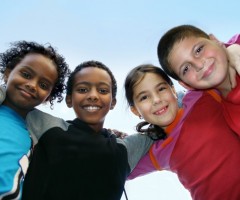Jeremy was a bright child in first grade. His parents were frustrated because of his troubles in school. As the day progressed Jeremy became fidgety, his ability to focus and attend to information decreased, and he became very irritable. In class Jeremy couldn’t sit still when the teacher taught. Everyone’s initial thought was Attention Deficit/Hyperactivity Disorder (ADHD), but did Jeremy suffer from Attention Deficit/Hyperactivity Disorder or could it be something else?
Attention Deficit Disorder (ADD) is an important and prevalent problem, but research in sleep laboratories has shown that some children are mislabeled with ADD when the real problem is sleep deprivation. A study by Ron Chervin, MD, published in the Journal of the American Academy of Pediatrics (April of 2006) found that 28% of children referred to an Ear Nose and Throat clinic for removal of their tonsils and adenoids because of symptoms of obstructive sleep apnea had also been diagnosed with ADHD. When these children were followed up one year after surgery, 50% no longer qualified for the diagnosis of ADHD.
Obstructive sleep apnea is a common medical condition that is now being identified in more and more children. Obstructive sleep apnea affects 2 percent of children with the peak age being 2 to 5 years old, but it can occur at any age. Obstructive sleep apnea can lead to behaviors easily mistaken for hyperactivity and is often overlooked by health professionals. “Lots of studies suggest that kids with sleep apnea are more likely to be hyperactive, impulsive and inattentive. It affects behavior and mood, so these kids can look a lot like a kid with ADHD ” says Dr. Judith Owens, associate professor of pediatrics at Brown University Medical School.”
“Sleep apnea is not a trivial disorder,” says Dr. David Gozal, director of the Pediatric Sleep Medicine Center at the University of Louisville School of Medicine in Kentucky. “We’re very concerned, because we’re not just talking about the immediate implications for quality of life. If not recognized early enough, especially in vulnerable children, sleep apnea may accelerate long-term disease processes, leading to advanced disease by the time they’re in adulthood.” During the night, two things are taking place. “The oxygen level dips, which is not good for your health; and the more prominent issue is that these kids are waking up throughout the night, and they’re not even aware of it,” says Jodi Mindell, a professor of psychology who is associate director of the Sleep Center at Children’s Hospital of Philadelphia.
Karen Bonuck PhD, professor of family and social medicine and of obstetrics and gynecology and women’s health, Albert Einstein College of Medicine did a large, population-based, longitudinal study looking at the effects of sleep-disordered breathing (SDB) symptoms from 6 months to 7 years of age on the child’s behavior. She found SBD symptoms had strong, persistent statistical effects on behavior. “The worse their breathing symptoms, the greater their risk of such problems as hyperactivity, behavioral problems including aggressiveness and rule-breaking, anxiety and depression, and difficulty getting along with peers.”
Children with sleep apnea do not get sound sleep. They may also get suboptimal oxygen to the brain at night. Obstructive sleep apnea can have a serious negative impact on a child’s intellect and behavior. The common symptoms of sleep apnea are similar to Attention Deficit Disorder and include difficulty paying attention during the day, decreased academic performance, oppositional behavior, and restlessness. Other symptoms of obstructive sleep apnea in children may include: snoring – loud, squeaky, raspynocturnal snorting, gasping, choking (may wake self up), restless sleep, heavy irregular breathing, excessive perspiring during sleep, severe bedwetting, bad dreams (nightmares), night terrors, sleeps with mouth open, chest retraction during sleep in young children (chest pulls in), sleeps in strange positions, confusion upon awakening, morning headaches, unrefreshing sleep, excessive daytime sleepiness, learning problems, excessive irritability, difficulty concentrating, frequent upper respiratory infections, and hyperactive behavior.
Left untreated, sleep apnea may negatively affect parts of the brain involved in learning, taking a toll on cognitive function and academic performance. The culprit causing the obstruction is usually the child’s own tonsils and adenoids, which tend to be relatively large in small children and sit near the entrance to the airway.
Obesity is another risk factor, because of the pressure on the airway. Children with sleep apnea may snore quite loudly for a bit, then are silent, then snort briefly, move about, and resume snoring. If snoring is accompanied by nighttime breathing difficulty and pauses in breathing, then it may well be sleep apnea. Though not all kids with sleep apnea snore. Even when they do, sleep apnea is often overlooked. Instead, the child is diagnosed with a behavioral disorder — most commonly Attention Deficit Disorder (ADD) (Journal of Clinical Child Psychology, Sep 1997). If you suspect that your child may have symptoms of obstructive sleep apnea talk to your pediatrician or a sleep specialist.






